Utilising sub-resolution halos in N-body simulations
Joaquín Armijo, Carlton Baugh, Nelson Padilla, Peder Norberg, and Christian Arnold



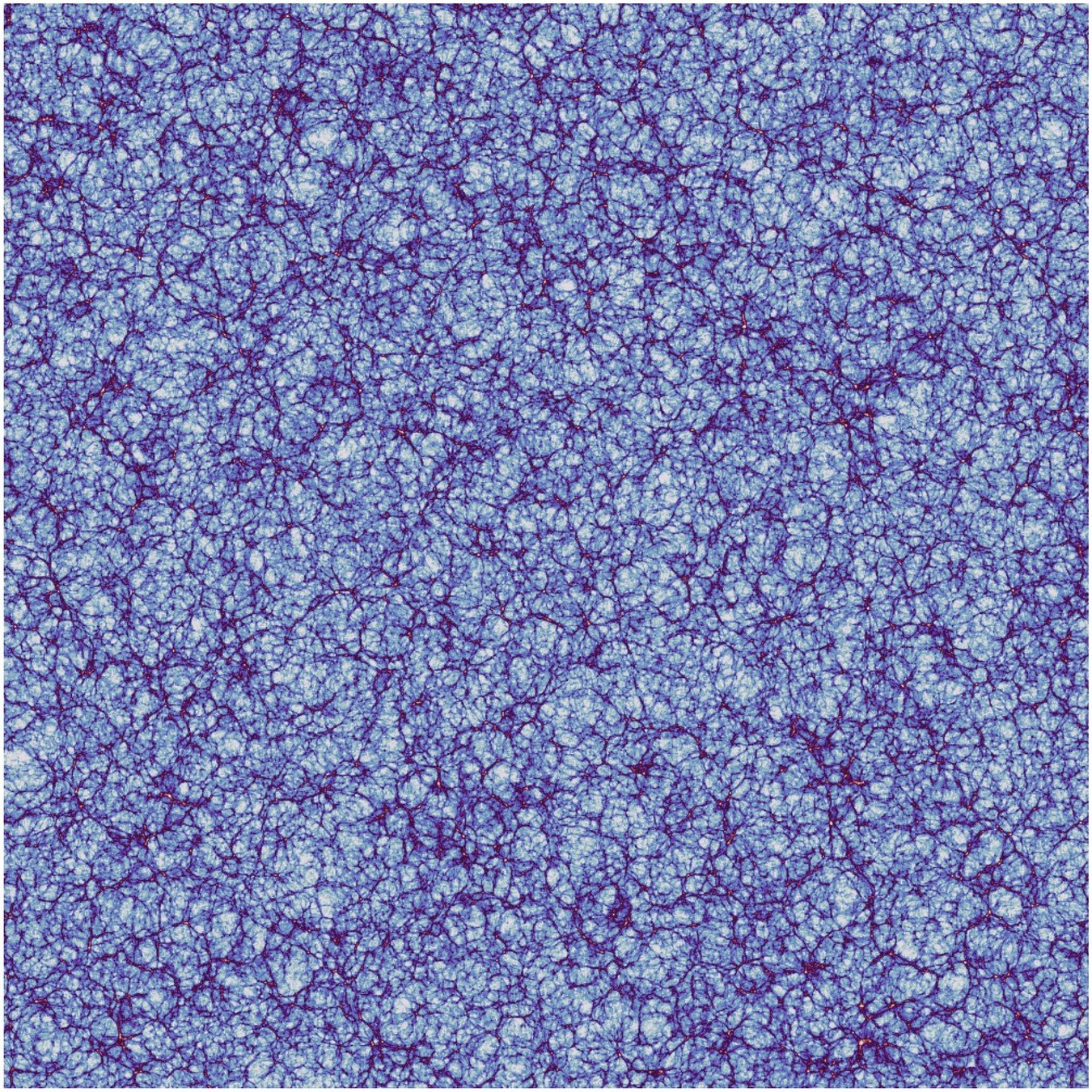
Using N-body simulations
Lbox = 1536 Mpc / h
The modified gravity light-cone simulation project
- Dark matter simulations to test cosmology and gravity models.
- What are the limitations of these labs? The finite number of particles, and the boxsize.



Using N-body simulations
Lbox = 1536 Mpc / h
- Dark matter simulations to test our cosmology and gravity models.
- What are the limitations of this lab? The finite number of particles, and the boxsize.
The modified gravity light-cone simulation project
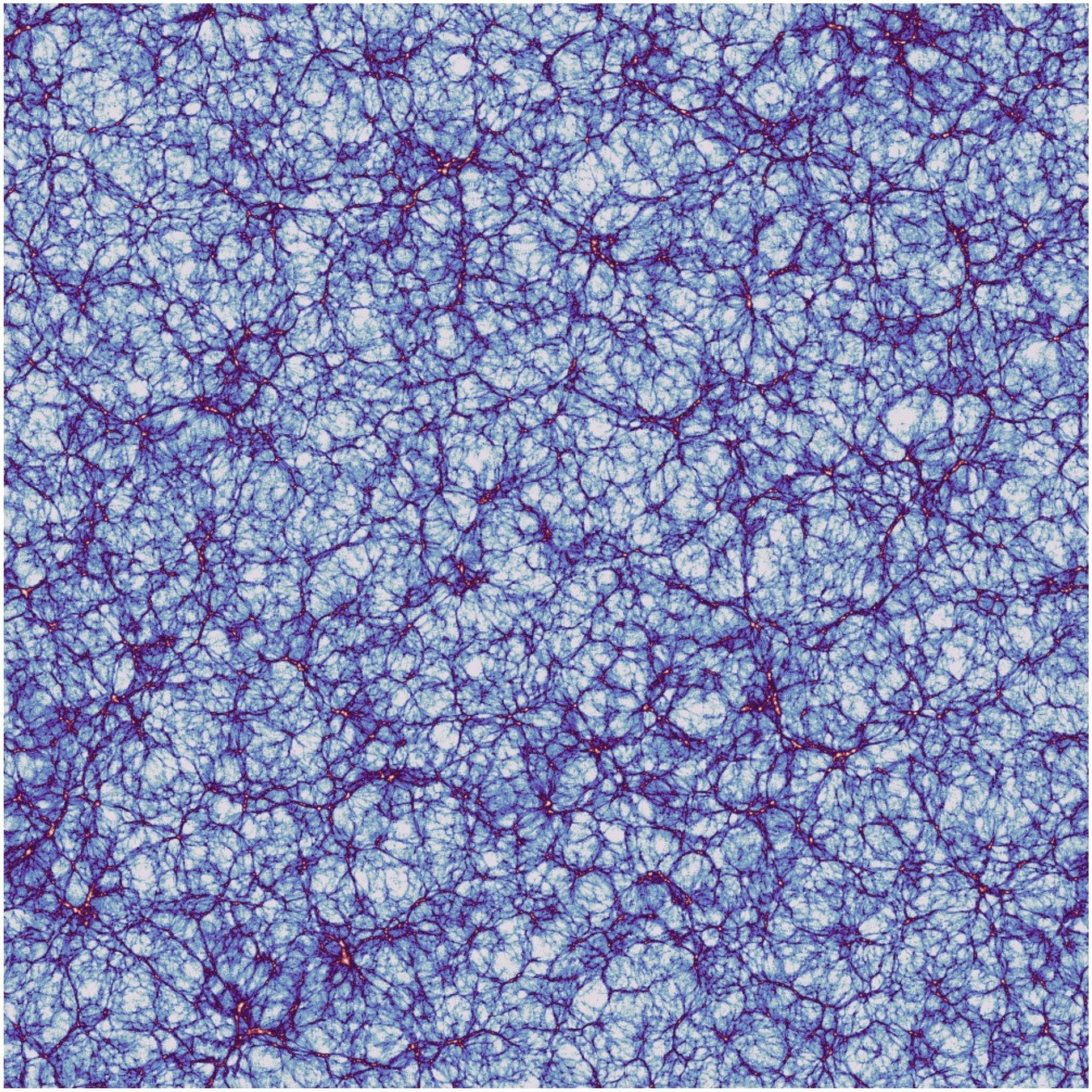
Using N-body simulations

- Low mass haloes can now be resolved with higher detail.
- We can explore the clustering in a new range of scales.
The modified gravity light-cone simulation project
Lbox = 768 Mpc / h
Let's increase the mass resolution fixing the same number of particles (decreasing the size of the box)

The halo mass function and simulation resolution

- To study they internal properties, haloes with several hundreds particles may be used
-
On the other hand, many authors have used haloes
down to 20 particles for the study of SAMs. - We select all bounded groups with more than 20 particles for this study.
z = 0
100 particles
The halo mass function and simulation resolution
z = 0
- The bias of halos is determined by the relative abundance of halos in different large-scale environments.


- This affects the clustering measurements that use such haloes.
The halo mass function and simulation resolution
z = 0
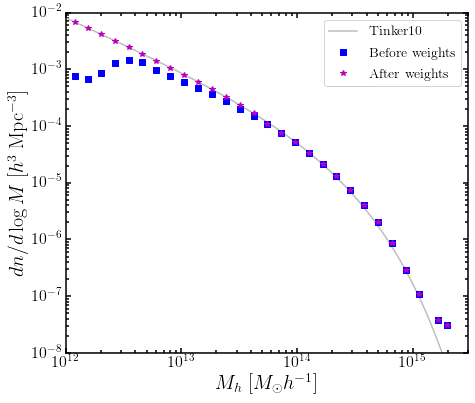
- Can the mass functions be recovered?
- A weight is defined in bins of halo mass such that the differential mass function of the simulation agrees with a reference mass function.
- We can use our high-resolution run (L768) as reference and the low-res L1536 to test the scheme.
Extending the resolution of the halo catalogue
z = 0

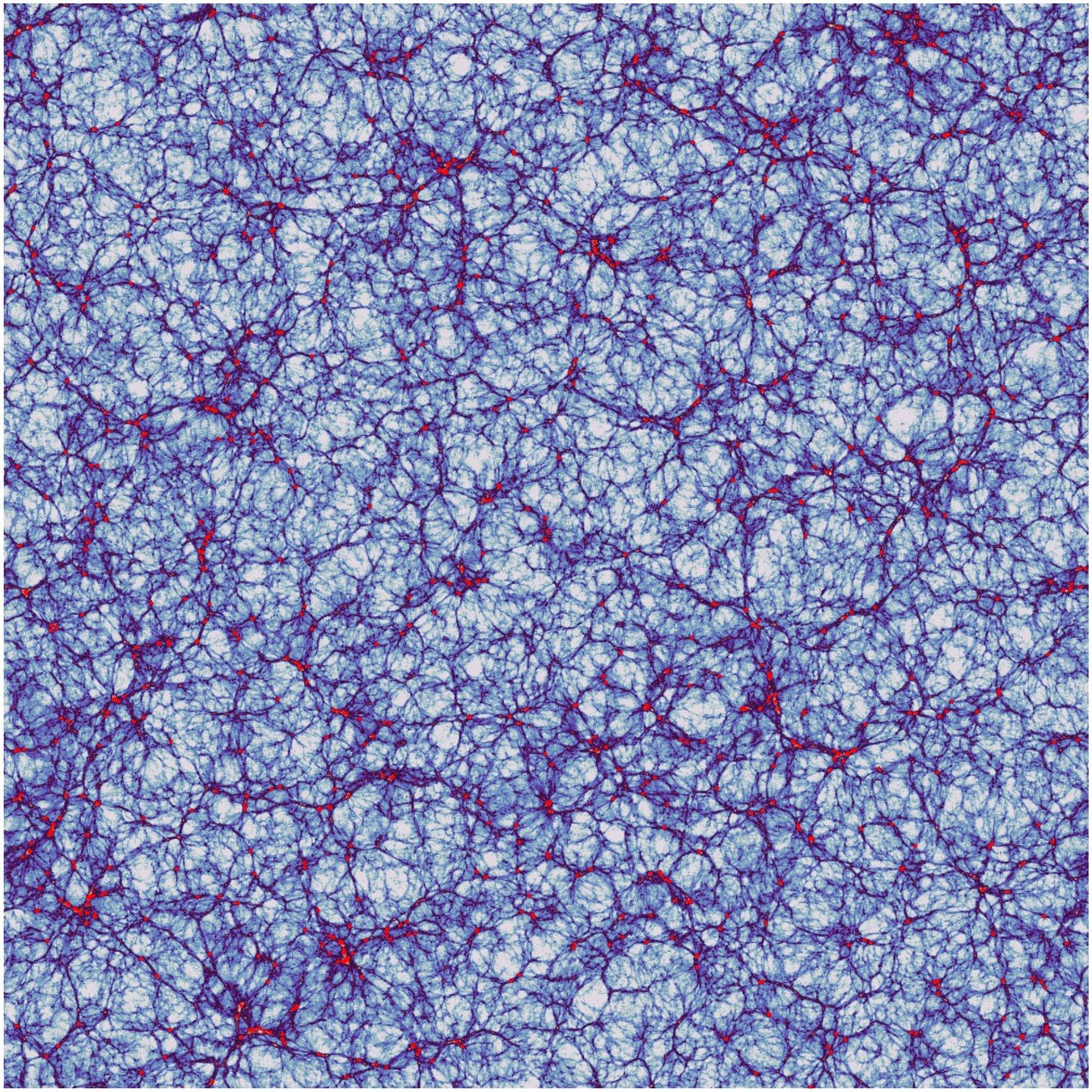
- To study the weighting scheme in the clustering we first need to populate haloes with galaxies.
- The halo occupation distribution prescription can be used to reproduce a mock catalogue.
The halo occupation distribution
z = 0
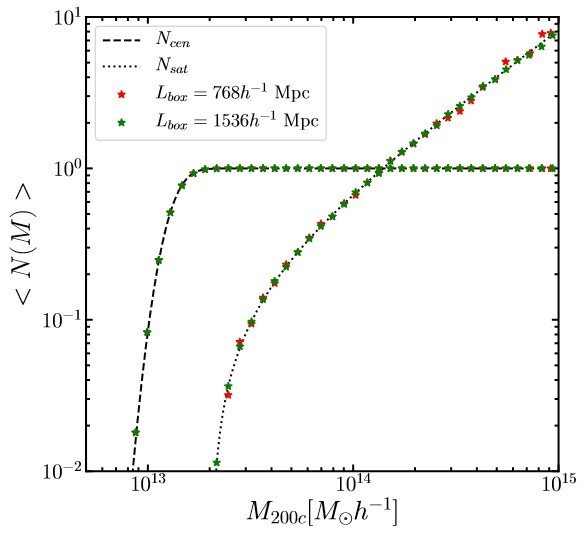


Five parameters HOD from Zheng et al. (2007)
Keeping only central galaxies for this excercise. Two parameters:
- The minimum halo mass to host a galaxy.
- The transition one to none central galaxies in the low mass haloes.
The fraction of missing galaxies.
z = 0
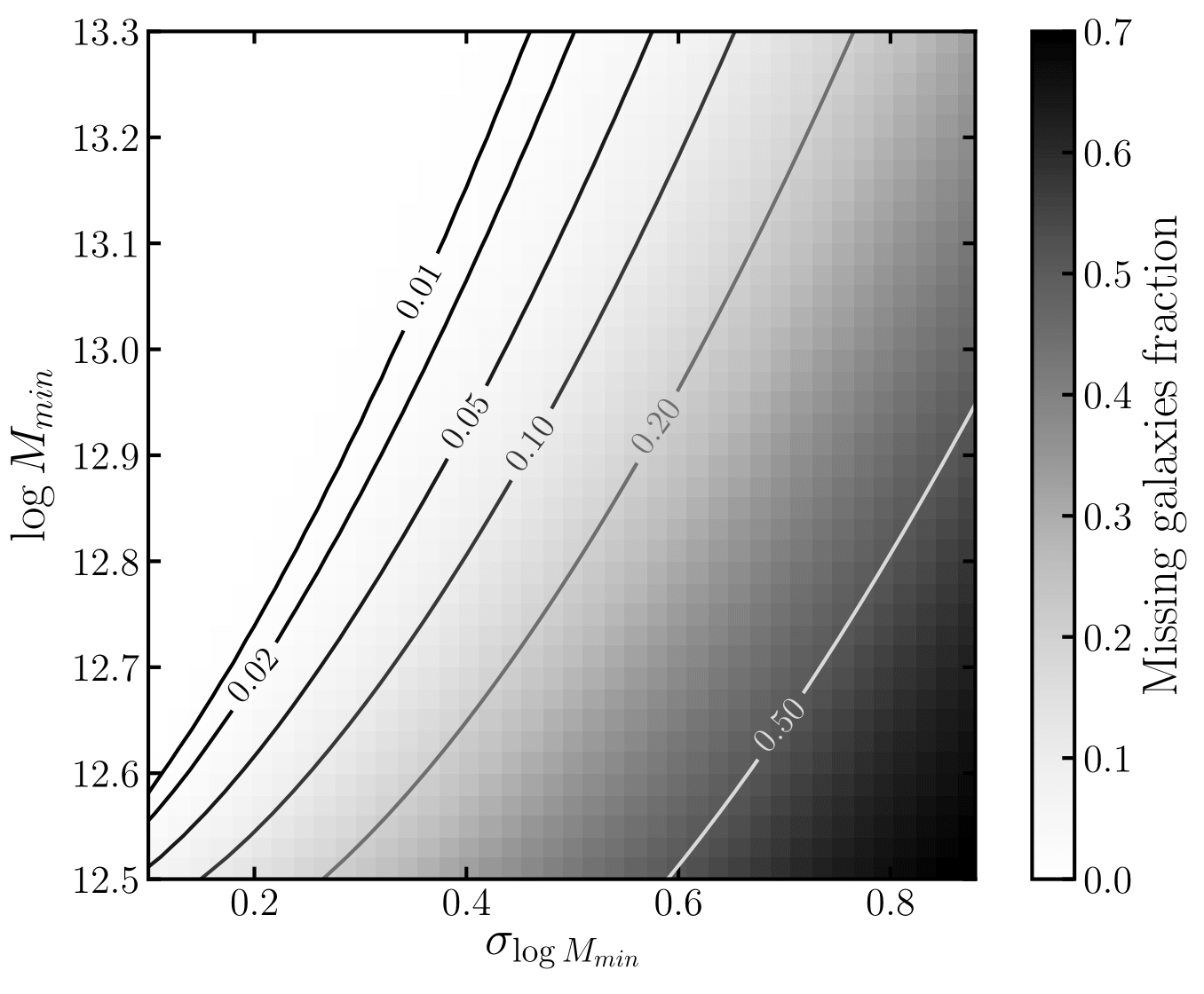
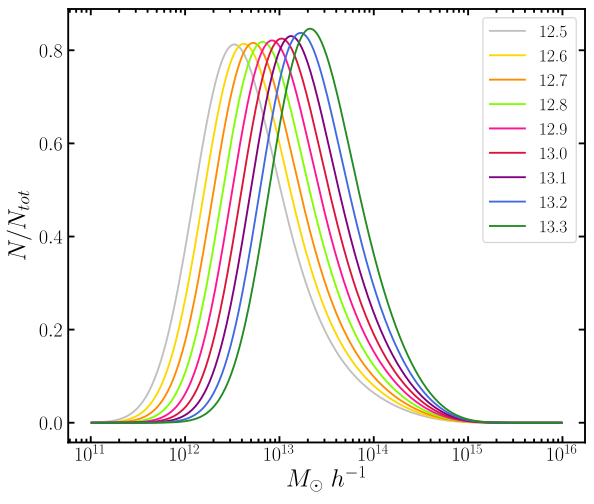
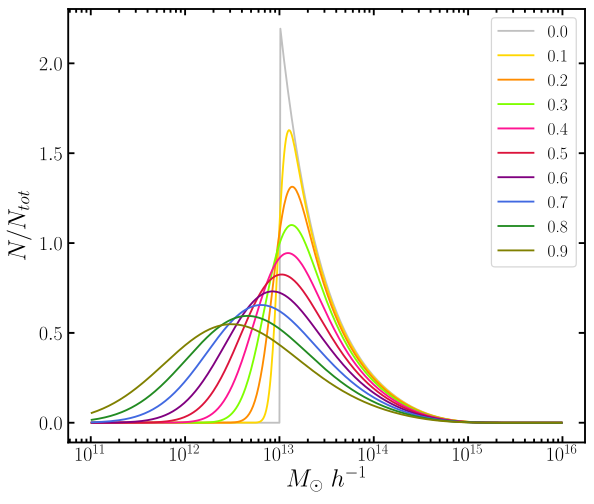
Halo mass
Luminosity Function * HOD


The 2PCF of low and high resolution simulations
z = 0

Armijo et al. 2021 (submitted)
Typical weights: ~1.5
Typical weights: 12.0
Using haloes with at least 11 particles
z = 0
The 2PCF of low and high resolution simulations


Armijo et al. 2021 (submitted)
Typical weights: ~1.5
Typical weights: 12.0
Using haloes with at least 11 particles
Recovering number densities
Number density
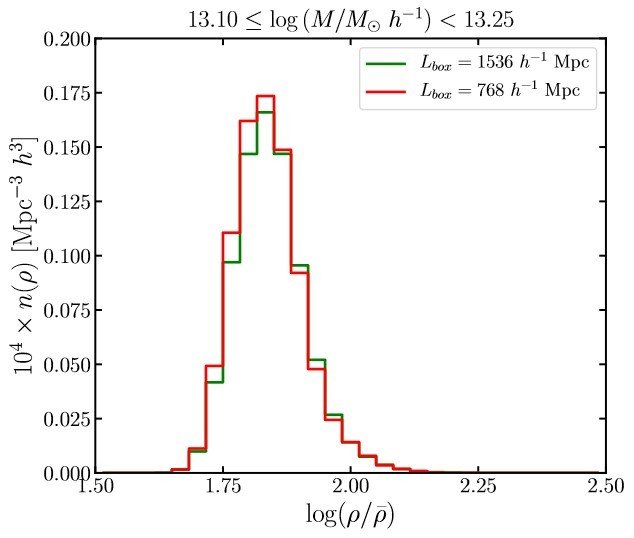

Armijo et al. 2021
The nature of sub-resolution haloes
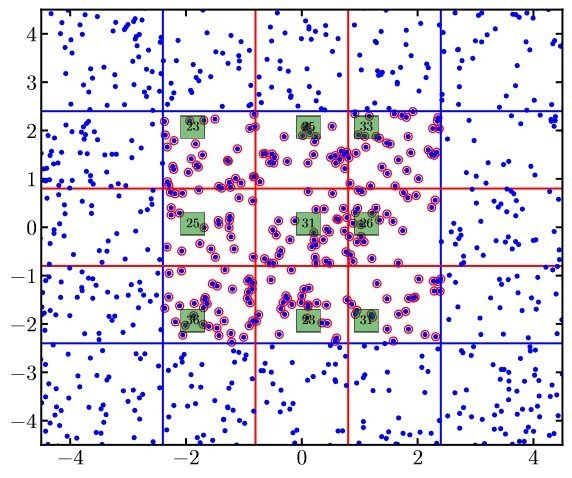
Counting particles in cell
Random point distribution
The nature of sub-resolution haloes
Halo 3D densities
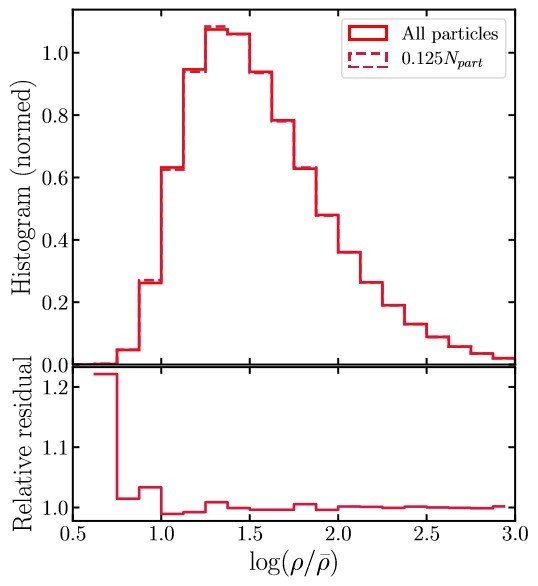
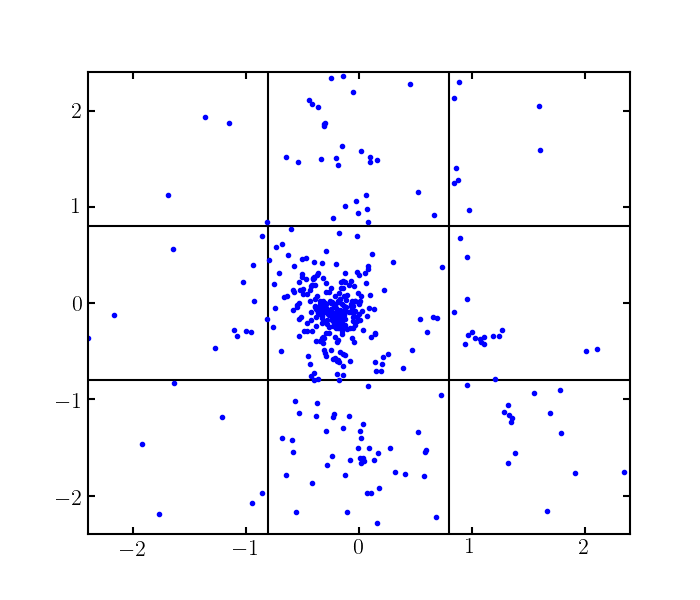
X [Mpc/h]
Y [Mpc/h]
Halo density
The nature of sub-resolution haloes
Halo densities
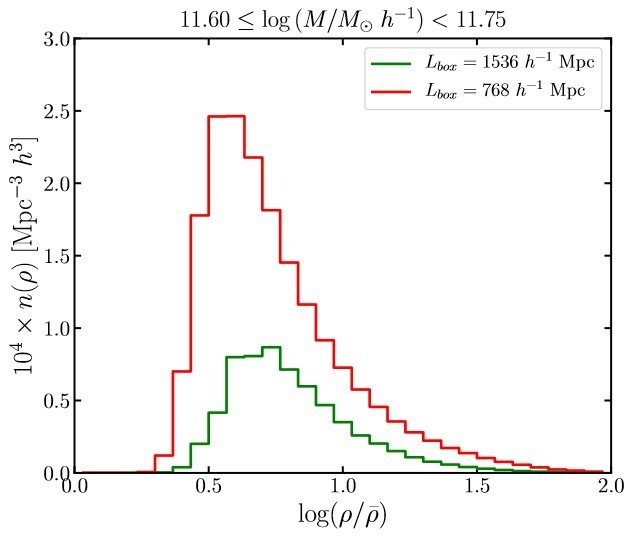

Armijo et al. 2021
Low mass haloes are biased to high densities on low-resolution simulations


Armijo et al. 2021
The nature of sub-resolution haloes
Halo densities
Low mass haloes are biased to high densities on low-resolution simulations
Summary and Conclusions
- The conservative choice of haloes with hundreds of particles is arbitrary. What use we can give to sub-resolution haloes?
- A simple weighting scheme to compensate for "missing" haloes by upweighting those that are recovered by the halo finder.
- We allow the resolution of a halo catalogue to be extended down to small particle numbers. We used haloes with ~11 particles.
- The scheme breaks down when the recovered clustering prediction becomes unacceptable within the errors (3-5%).
Thank you!
jarmijotorres

https://jarmijotorres.github.io/Joaquin.Armijo.Torres/